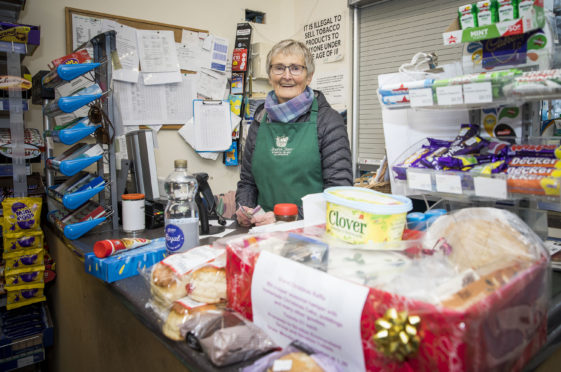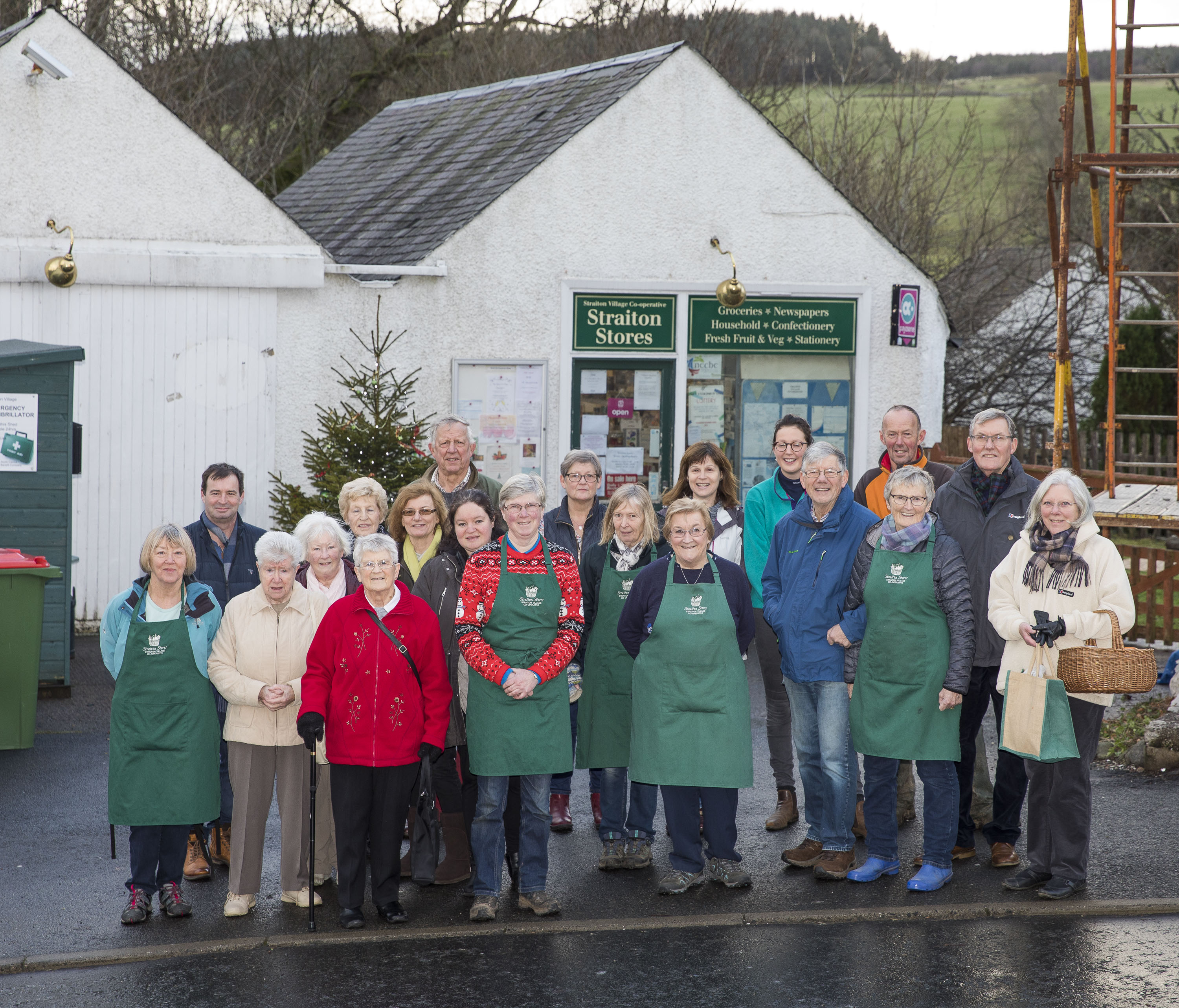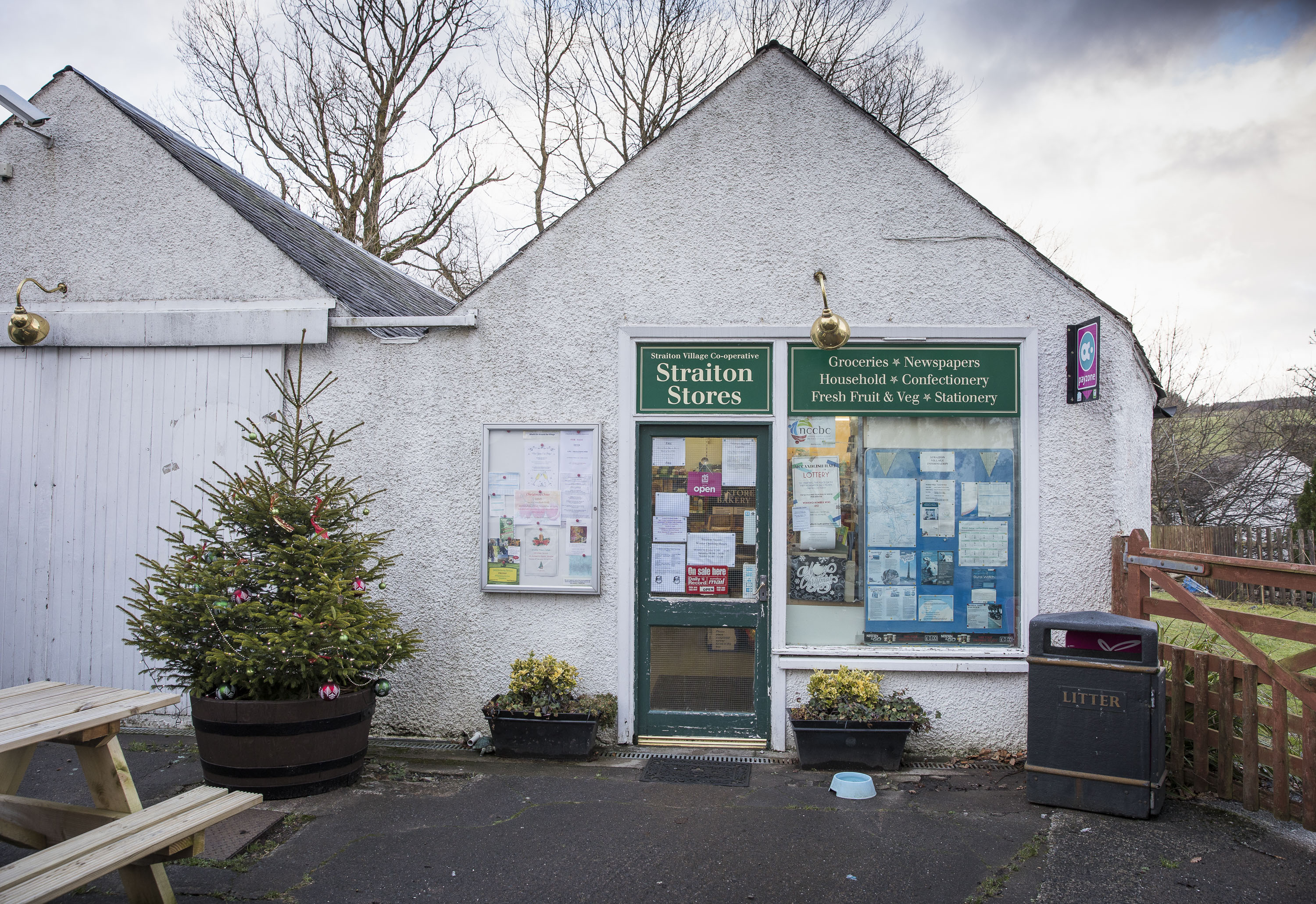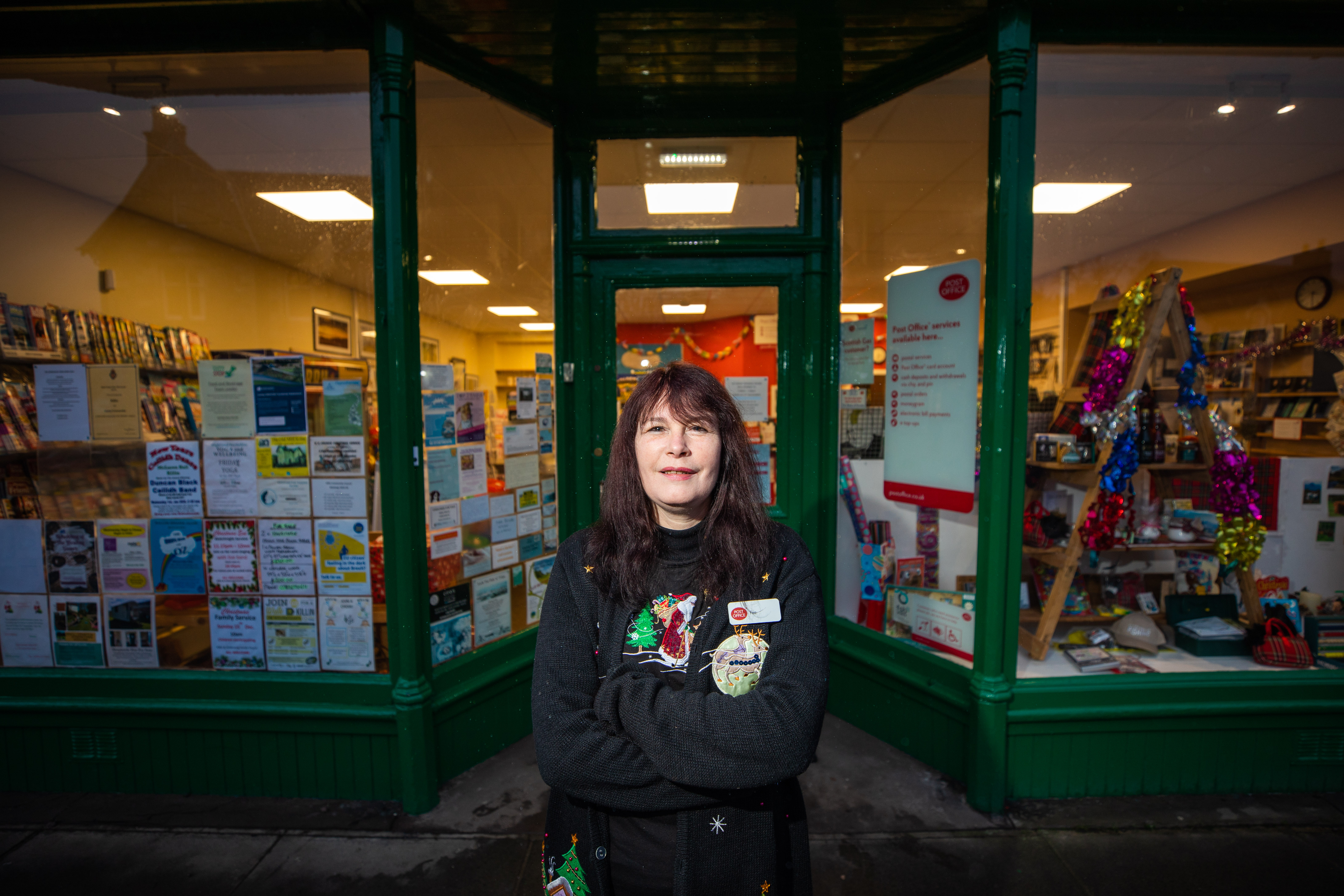
Food miles, or the distance what we eat travels before reaching our plates and its environmental impact, is one of the world’s hottest topics. But, in Straiton, villagers can almost measure their food miles in feet and inches.
Alongside everyday essentials like bread and milk, the south Ayrshire village shop – located in a converted garage just off Main Street – stocks venison, chickens, eggs, honey and vegetables that have been raised, grown or collected around and about.
And then, of course, there’s the bread and croissants baked fresh on the premises every morning.
This small store, set at the bottom of the “Ayrshire Alps”, the steep hills of South Carrick that pose an irresistible challenge for serious cyclists, is more than just a place to buy The Sunday Post or a pint of milk.
It’s the beating heart of village life, where neighbours in this small community come together to chat, swap news and catch up on local events.
If an under-the-weather pensioner needs a loaf of bread, they need only phone the shop to have it delivered.
When one elderly resident developed dementia and would regularly buy up half the shop, someone would pop round later, refund her money and bring back anything she didn’t need.
Meanwhile, regulars not seen in the shop for a few days will get a knock on the door to make sure they are alright.
For van drivers on their rounds, bus drivers for whom the village (population 150) is the last stop on the route from Ayr, pupils at the village school, walkers and cyclists gearing up for the climb ahead and people who live in or around the village, Straiton Stores provides an essential service… with no self-checkout tills in sight.
Yet some years ago Straiton – a picturesque planned village built by Thomas Kennedy, Earl of Cassillis in the late 18th Century – faced losing its only shop, when the owners at the time decided to move on.
With no buyers on the horizon, the villagers rallied, raising money, forming a co-operative and successfully completing a Christmas Day handover of the lease in 2008.
Jenny Morrison, a member of the committee, says: “At the time we had around five or six residents in the village who were each approaching their centenary, so for them the shop was essential. They couldn’t just hop on a bus when they needed shopping. So we had to keep it open.”
Today there’s a group of about 24 local people involved in running the store. Some work behind the scenes, other take their turn at the tills and now they also employ a part-time manager to help with the workload.
Janette Fleggs is in charge of the rota, letting volunteers know when it’s their turn to do a stint, while Ian Arnott is chairman, overseeing everything that needs doing to keep the doors of Straiton Stores open.
“None of this would happen without volunteers, but at the beginning none of us had any retail experience,” says Ian.
But, as the people of Straiton began to learn about ordering stock, dealing with suppliers and keeping accounts, they were also becoming part of a retail revolution that’s defying current trends.
While Scotland’s high streets are struggling, with an average of five shops closing every week, in rural areas, local people are stepping up in increasing numbers to run their local shop as a community venture.
It has already happened at Dunshalt in Fife, in Morebattle in the Scottish Borders, at Ullapool in the Highlands and at Carloway on the Island of Lewis.
All these shop buy-outs have been made possible by the Scottish Land Fund, which provides funding for community assets.
Set up in 2016, the fund supported one community shop buyout in its first 12 months. Now it is helping five or six villages every year to take over their local store.
John Watt, chairman of the Scottish Land Fund, says: “By assisting with the purchase of village shops, the Scottish Land Fund is helping to strengthen rural communities and allowing them to take charge of one of the most important of all local services.”
And, in 2018, the Scottish Land Fund gave Straiton Stores Co-operative £257,500 to buy the shop they had been running for a decade, money that included funds to buy the house next door.
Ian Arnott says: “We need to expand and improve the shop so, by renting out the house, we will create an income that will help to support the store.”
With the house now refurbished and ready for tenants, plans for work on the shop will soon go ahead, creating space for more stock and a cafe area.
According to John Lee of the Scottish Grocers Federation, this is exactly what small shops need to do in order to flourish.
He says rural shops face even more pressures than those on the high street as they frequently have higher costs and lower turnover.
“The margins are that bit tighter. Those that do well are the ones that adapt and add extra services that fill a need in the community.”
That’s what is happening at Straiton and in other villages around Scotland where, faced with losing what is sometimes the only shop for many miles, they are rolling up their sleeves, stacking the shelves and hanging a “shop open” sign on the door.
‘People like the personal touch.. our role is to serve the community’
Christmas was a busy time for the Post Office within MacGregor’s Market in the beautiful Stirlingshire village of Killin.
Along with all the usual business of pensions, driving licence application forms and cash (for those days when the village’s banking facilities are closed), they made sure villagers could send their parcels.
When the last Post Office closed it became clear that life for many people in the village was very difficult without one, so Killin and Ardeonaig Community Development Trust applied for a grant to the Scottish Land Fund and were awarded £110,213 towards the £166,657 of buying a former newsagent’s in the village.
The Trust then invited local social enterprise company MacGregor’s Market to move their grocery business into the new site and to reopen a village Post Office.
Fiona Davidson, who was in at the very start of the campaign to reopen Killin Post Office now works behind the counter and is recovering from the pre-Christmas rush that saw customers with parcels to post queuing out the door.
“The Post Office is at the heart of village life and those years that we were without it, were so hard in so many ways,” she says.
“For pensioners coming in to pick up their pensions, we might be the only person they see that day and for the many visitors who come to the area we are like a tourist information centre, telling them where to go and what to see.
“The Post Office and shop are buzzing every day and because my family goes back hundreds of years in Killin, I know 90% of the people who come through the door and can help them with what they need.
“People like the personal touch and our role here is to serve the community.”
And it’s a similar story at Furnace in Argyll where, earlier this year a grant of £164,065 from the Scottish Land Fund helped villagers, who had formed themselves into an SCIO (Scottish Charitable Incorporated Organisation), to buy the local shop, Post Office and attached bungalow.
Andrea Henderson, one of the residents involved, says: “It is eight miles from here to our nearest shops and Post Office in Inverary, and although we get five buses a day, anyone who took the bus to Inverary would have to wait three hours to get another back again.”

Enjoy the convenience of having The Sunday Post delivered as a digital ePaper straight to your smartphone, tablet or computer.
Subscribe for only £5.49 a month and enjoy all the benefits of the printed paper as a digital replica.
Subscribe © Jamie Williamson
© Jamie Williamson © Jamie Williamson
© Jamie Williamson © Steve MacDougall / DCT Media
© Steve MacDougall / DCT Media